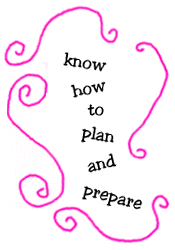 Ah, summertime. Hooray for our Red, White, and Blue, and for the season of hot dogs, lemonade, and popsicles. Here’s a few tips about the fine art of eating outdoors, from Mary Lockwoods Matthews’ somewhat repetitive Elementary Home Economics.
Ah, summertime. Hooray for our Red, White, and Blue, and for the season of hot dogs, lemonade, and popsicles. Here’s a few tips about the fine art of eating outdoors, from Mary Lockwoods Matthews’ somewhat repetitive Elementary Home Economics.
1928: Meals Out-of-Doors
![]() Most boys and girls like to go on picnics. A picnic lunch may consist entirely of cooked foods that are ready to serve, or part of the foods may be prepared at home and others cooked over a camp fire on the beach, in the woods, or wherever the picnic is to be held. When all the foods are to be prepared at home, they must be carried in suitable containers, so that they will be in good condition when it is time to serve them. Thermos bottles or jugs may be used for carrying hot cocoa, milk, water, or any other cold or hot drink, and bottles having a large mouth may be used for hot or cold foods. One may use a picnic basket equipped with knives, forks, spoons, plates, cups, and containers for various types of food. In some of these baskets there are compartments for ice, so arranged that foods may be kept cold. These baskets are quite elaborate, expensive, and heavy to carry, and often thermos bottles or jugs can be used for foods which must be kept hot or cold, while other foods may be packed as you would pack a school lunch. . . .
Most boys and girls like to go on picnics. A picnic lunch may consist entirely of cooked foods that are ready to serve, or part of the foods may be prepared at home and others cooked over a camp fire on the beach, in the woods, or wherever the picnic is to be held. When all the foods are to be prepared at home, they must be carried in suitable containers, so that they will be in good condition when it is time to serve them. Thermos bottles or jugs may be used for carrying hot cocoa, milk, water, or any other cold or hot drink, and bottles having a large mouth may be used for hot or cold foods. One may use a picnic basket equipped with knives, forks, spoons, plates, cups, and containers for various types of food. In some of these baskets there are compartments for ice, so arranged that foods may be kept cold. These baskets are quite elaborate, expensive, and heavy to carry, and often thermos bottles or jugs can be used for foods which must be kept hot or cold, while other foods may be packed as you would pack a school lunch. . . .
In planning a picnic it is important:
1. To plan a menu which requires few dishes for serving, and which does not contain cooked foods that are spoiled with standing or jarring.
2. To make a list of all utensils and dishes and of the amounts and kinds of foods needed, so that none will be forgotten.
3. To pack these so that foods will not be crushed or exposed to dust or flies, so that dishes will be kept free from dust and flies, and so that thermos bottles or other glass or china containers will not be broken.
4. To pack the lunch in such containers as can be conveniently carried or placed in the available space in an automobile. It is better to pack the lunch in several light-weight baskets or boxes when it must be carried some distance by hand.
5. To take several tea towels, hand towels, and cloths to be used for emergencies, or when clearing up after the meal. . . .
To plan and prepare a picnic lunch for a number of people requires considerable work, and many times picnics are not a popular pastime because of this fact. An easy way to arrange a picnic is to make the menu, estimating the amount of each food needed, then to assign to each person a certain amount of one food to be prepared. Each person may then take her own dishes and the one prepared food, and the work of preparation is not difficult. Often the menu for a picnic is too elaborate and makes the work of preparation too difficult. Since touring has become such an important pastime in this country, it is desirable for each girl to know how to plan and prepare a picnic lunch, and to cook out-of-doors.![]()
Source: Matthews, Mary Lockwood. Elementary Home Economics. Boston: Little, Brown, and Company,1928.
~ pp. 173-74, 177-78 ~